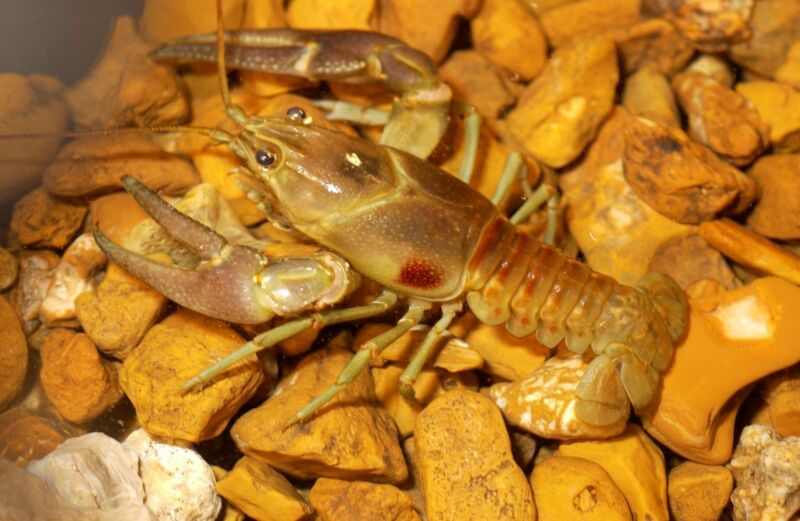
When people flush their old prescription (or off-prescription) drugs, the compounds invariably make their way into the waters nearby. The same is true even when people using these chemicals urinate them into the sewage system. Once there, these compounds—from prozac to cocaine—can end up in the bodies of aquatic creatures. And, research suggests, the chemicals can impact them: birth control, for instance, affects frog breeding after it enters the water.
We metabolize many of the drugs we take, and water treatment plants remove some of rest. But some concentration can still remain as the water is released to the surrounding lakes and streams.
So far, there’s not been much research into how, if at all, other drugs like cocaine and various opioids, affect aquatic life—but scientists say negative effects are not wholly impossible. And there is now some evidence that at least some classification of drugs do cause trouble. New research suggests that a common antidepressant, citalopram, can change the behavior of crayfish, making them bolder than they would be otherwise.
The data come from A.J. Reisinger—assistant professor in the Soil and Water Sciences Department at the University of Florida—and his team, which travelled to the Cary Institute of Ecosystem Studies in 2017. The facility has several artificial streams that mimic natural conditions but allow researchers to control different aspects of the environment. Reisinger’s team went out into the field and collected rocks, bugs, leaves, and crayfish and put them into the artificial streams.
Crayfish were chosen because they can reach high biomasses in aquatic ecosystems and will “eat anything they can get their claws on. They’ll eat bugs, they’ll eat algae, they’ll eat leaves, they’ll eat juvenile fish, even,” Reisinger told Ars.
Crayfish therapy
The researchers brought their subjects to the Cary Institute and began their experiment after setting up each stream as close to reality as possible using the rocks and other material from the crayfish’s normal environment. They set up a quarter of the streams to have neither citalopram—a selective serotonin reuptake inhibitor (SSRI) antidepressant—nor crayfish as a control. In a second quarter of the streams, they added crayfish but no citalopram. In a third quarter, they had only the SSRI—in concentrations that have been found in nature—and in the fourth, they added both.
From there, the researchers let the experiment run for two weeks before removing individual crayfish and putting them in new tanks. These tanks had mazes in the middle, and Reisinger’s team initially introduced the crayfish to them via a small shelter at one end. At the opposite side of the maze, the team placed either a substance that smelled like food (sardine gelatin, in this case) or another crayfish. The researchers wanted see how their subjects would react.
The crayfish that were exposed to citalopram left their shelters faster, and they spent more time moving toward the food, compared to their peers who didn’t get the SSRI. They didn’t show any more interest in moving toward the other crayfish, however.
“That tells us they’re more bold. They’re more likely to leave their shelter in their real environment,” Reisinger said.
That boldness could potentially have a broader impact on the environment. The team found that the streams containing crayfish saw an increase an algal biomass and organic matter. However, this wasn’t dependent on the crustaceans being exposed to the antidepressant.
According to Reisinger, the bolder crayfish that had been exposed to citalopram might have had a different effect on the streams if the researchers had run the experiments for longer than two weeks. There were likely lags between the addition of the drug and the crayfish’s altered behavior as well as between that and the crayfish having a different impact on their environment. “We think that, if we had run the study for a little bit longer, we might have seen a difference,” he said.
Other drugs?
Alex Ford, a professor of biology at Portsmouth University in the UK, ran one of the earliest studies on the effects on prozac, another antidepressant, on shrimp. Much like Reisinger’s work, Ford’s suggested that the drug made them more reckless and active. Since then, his team has looked into a slew of other substances in aquatic organisms, including other SSRIs and benzodiazepines.
Ars asked Ford if it’s possible for shrimp and other aquatic species to become intoxicated (or otherwise have their behaviors changed) as a result of recreational or medicinal psychoactive substances reaching the waterways. He said, “Theoretically, yes. Not just with cocaine, but with the whole suite of drugs out there—the illegal ones.”
Ford noted that, in the past, he and various colleagues studied if low amounts of cocaine would affect shrimp behavior, but it did not appear to. However, they simply looked at swimming speed among shrimp, and it’s possible that other behaviors would’ve changed. The concentration of the drugs—which usually appears in water in low but continuous levels—is also a factor.
Hypothetically, say there’s a small village that used a lot of fentanyl, an incredibly potent opioid. This hypothetical village also doesn’t have the best water treatment plant, and the river into which wastewater flows is tiny. Under these conditions there could, theoretically, be an effect.
Last month, Ford and around 30 international authors penned a report suggesting that regulating bodies should consider potential changes to behavior in aquatic organisms before greenlighting a new chemical. Currently, they are tested for their effects on growth and reproduction. “When we assess the impact of chemicals on the environment, we need to consider behavior, because at the moment, most chemicals only go through quite simple tests before they go on the market,” he told Ars.
So, don’t flush your old prescriptions.
Ecosphere, 2021. DOI: 10.1002/ecs2.3527 (About DOIs).